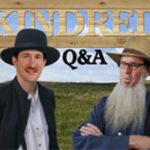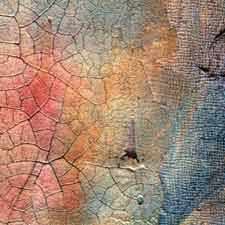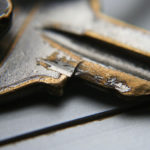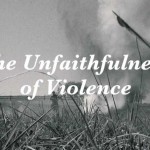We run our website the way we wished the whole internet worked: we provide high quality original content with no ads. We are funded solely by your direct support. Please consider supporting this project.
How Revelation Uses Violent Images in an Anti-Violent Way
All the violent scenes in Revelation are symbols for the battle of truth and deception. They never involve literal violence. In fact, they symbolize ANTI-VIOLENCE. The ingenious way John helps us get free of deception of trust in violent power is by taking a standard violent symbol and juxtaposing it with a symbol that undermines its violence and reverses its violent meaning.
An interesting example of this is when John introduces the mysterious 144,000, which represent the army that fights with the Lamb. They are introduced in Revelation 7: 4: “Then I heard the number of those who were sealed: 144,000 from all the tribes of Israel.”
The 144,000 was a well known Jewish symbol of the army that would accompany the Messiah in a violent uprising against Israel’s foes to restore Israel to its place as a sovereign nation.
But this image of violence gets turned on its head. One example of this is found in Revelation 7:14: “These are they who have come out of the great tribulation; they have washed their robes and made them white in the blood of the Lamb.”
If you read Revelation literally, you have to wonder how washing a robe in blood could make it white. Taken literally its absurd, but interpreted symbolically its profound because this washing of the robes is a Jewish military metaphor.
To be covered with another’s blood rendered you ceremonially unclean, so when Jewish warriors came back from battle covered with the blood of their enemies, they had to go through a purification bathing process before they could reenter society. Instead of washing OFF the blood of foes to become clean, these warriors are made clean by being washed IN blood – and it’s the blood of the one they followed into battle!
Many scholars believe John is not simply saying their sins are washed away by the blood of the lamb, though that is of course true. He is also saying that this army wears white linen because they shared in the blood of the Lamb.
They were willing to suffer with Christ. As it says in chapter 14, this 144,000 was willing to “follow the lamb wherever he goes,” even to the cross. While the standard image of the army of 144,000 following their messiah into battle was based on Babylon’s sword power, John has turned it on its head to communicate slain lamb power — the power of self-sacrificial love.
We are indeed part of an army, but not one that wins by shedding blood: we win by shedding our blood, just as Jesus did.
Category: General
Tags: Book of Revelation, Cruciform Theology, Non-Violence, Violence
Related Reading

The Principle of Non-Violence
Several years ago, Woodland Hills Church hosted a Q&A with Greg Boyd and Paul Eddy to answer questions that arose from their exploration of Anabaptism. In this short clip, they address the Anabaptist principle of non-violence, and point out that this principle goes far beyond refraining from external violence. The call to non-violence is grounded in our…

Absolute Truth and Violence
A common argument today against Christianity is that believing that Jesus (or any other religious figure or religion) is the only way to God (See yesterday’s post) is “dangerous.” This claim actually has some justification, for it is undeniable that most of the butchery carried out throughout history has been done in the name of defending…

Two Questions to Unlock Violent Divine Portraits
There are two basic questions that help us to interpret what is going on in the violent portraits of God in the Old Testament, as I propose in Crucifixion of the Warrior God. The First Question: What does the “God-breathed” revelation of the cross teach us about the nature of God’s “breathing”? God “breathed” his…

The Unfaithfulness of Violence
For more videos like this be sure to visit The Work of the People.

Washing Osama’s Feet – blog post 8/28/07
(This post was written by Greg on Sunday, October 28, 2007. It was such a controversial entry that he had to write a follow-up post which you can read here) Brad Cole is a friend of mine who runs a ministry called Heavenly Sanctuary. This ministry puts on Conferences around the country on the Character…

The Myth of Redemptive Violence
Check out Shane Claiborne’s excellent piece on the problem of violence posted yesterday on Huffington Post. Money quote: “Christian theologians have said Jesus teaches a ‘third way’ to interact with evil. We see a Jesus who abhors both passivity and violence and teaches us a new way forward that is neither submission nor assault, neither…
